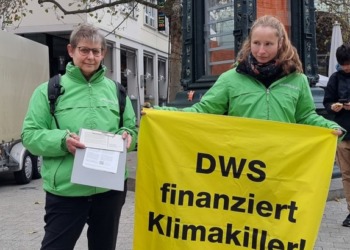A Bfinance report published last month found that over 50 asset management firms are now active in the natural capital sector. As the interest of institutional investors in this asset class grows, searches for managers that offer “natural capital” strategies have now outstripped searches for real estate managers across the Bfinance platform for the first time.
The report, titled “Natural Capital Investing: Forestry, Agriculture and Carbon Credits,” provides an introduction to how “strong market fundamentals and climate impact potential have driven a surge in institutional investor demand for natural capital.”
While “capital” is traditionally only thought of as money, the term encompasses any resource or asset that stores or provides value to humans. Natural capital, along with human capital and social capital, also generates value if invested in properly.
The Capitals Coalition (formerly The Natural Capital Coalition) defines natural capital as the stock of renewable and non-renewable natural resources that combine to yield a flow of benefits to people.
These benefits to society can be split into four categories, more commonly known as the four ecosystem services: Provisioning, Regulating, Cultural and Supporting.
Provisioning services are any benefit that can be extracted from nature, Regulating services moderate nature, Cultural services contribute to the development and cultural advancement of society and Supporting services sustain life on earth.
Overall, the world’s natural capital is valued at an estimated $125trn. While most of this value is not accessible to capital markets, this is starting to change.
Natural Capital: The Evolution
Investing in natural capital is not a new concept, but the nature of this investment has evolved. Historically, people and enterprises invested in agriculture, mining, timber and energy to generate income from extracting or managing natural resources.
Today, there is a greater emphasis on sustainability. The shift in priorities across the asset management sphere reflects the urgent action required globally to reverse biodiversity loss and curb temperature increases through the protection and restoration of the biosphere.
Many of the 50 asset management firms active in the natural capital sector run multiple strategies.
In some areas, such as timberland funds, the landscape has evolved since the turn of the century, whereas agriculture funds grew in prominence during the 2010s. Currently, Nature-Based Solutions are the area of natural capital experiencing the most rapid growth rate across the asset management sphere.
Bfinance also outlined that a large proportion of the funds in their report offer minimal or no recurring yields. 16% of returns were driven almost entirely by carbon credit production, while the rest had commercial returns supplemented by carbon credit revenue.
Funds with considerable exposure to natural climate solutions tend not to offer short-term yields. Often, these yields occur after three years when credits begin to be generated.
Natural Capital: The Present
Most investment strategies now feature return drivers such as carbon credits and conservation easements. Thirty-two of the strategies offered by asset managers within Bfinance’s report create carbon credits for investors aiming to raise a combined $19bn in equity commitments.
There are two forms of carbon credits: “avoidance” credits that stop emissions from being generated and “removal” credits that actively extract carbon from the atmosphere.
The effectiveness of “Avoidance” credits is often questioned as proving the extent to which emission generation is prevented beyond “business as usual” can be challanging. Consequently, 2023 saw a 20% fall in the issuance of avoidance credits, according to a recent Carbon Direct report.
Natural capital strategies across the asset management sphere are now increasingly focused on “removal” credits through afforestation, reforestation and improved forest management (IFM). This focus comes despite concerns about the quality of “removal” credits due to their inherently high variability, particularly for credits focused on IFM.
Related Articles: Should Nature be Given Legal Rights? | Climate Solutions Are Already in Our Nature | Nature Loss — Risky Business | Nature Capitalism and its Woes: The Consequences of Environmental Pricing | Europe’s Efforts to ‘Restore Nature’ Hit a Snag | Scaling up Nature-Based Infrastructure for People and Planet | Ecological Collapse: Why We Should Return to Nature |
Other natural capital markets are also beginning to emerge, giving investors an ever-widening scope to align their financial aims with sustainability goals and regulations.
One example is the recent collaboration between Environment Bank Limited (EBL) and alternative asset manager Gresham House to create a new infrastructure asset class: Biodiversity Net Gain Credits.
By cultivating agricultural land with low yields, EBL generates an uplift in biodiversity and consequently allows investors to meet their Biodiversity Net Gain targets, providing returns for investors and enhancing nature simultaneously.
Natural Capital: Looking to the future
The natural capital market is incredibly dynamic and those involved need to continually evolve to keep pace with rapid growth and innovation.
Questions remain regarding the market’s integrity, particularly in the area of carbon credits, where both the quality and return expectations have faced criticism.
Despite this, investors have evidently been alerted to natural capital’s potential for providing opportunities where financial and environmental prosperity coexist. As natural capital strategies continue to become more popular across the asset management sphere, the shift in appetite seen in 2023 could mark the dawn of a new era of sustainable investment.
Editor’s Note: The opinions expressed here by the authors are their own, not those of Impakter.com — Featured Photo Credit: Felix Mittermeier.








